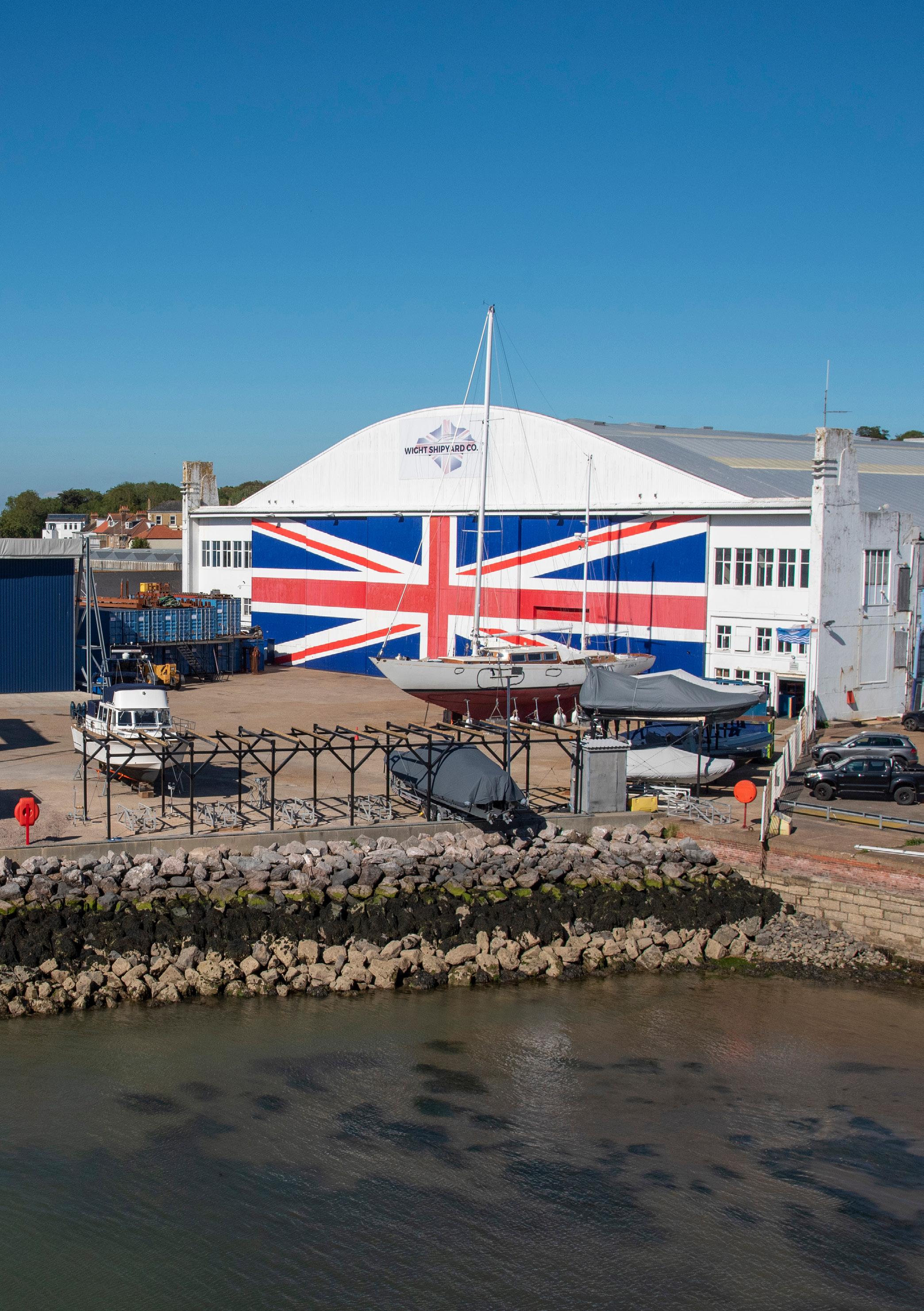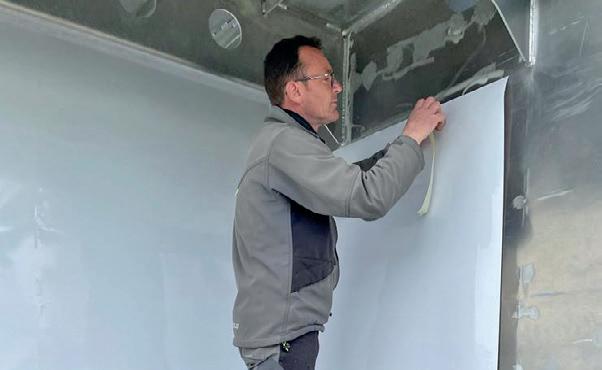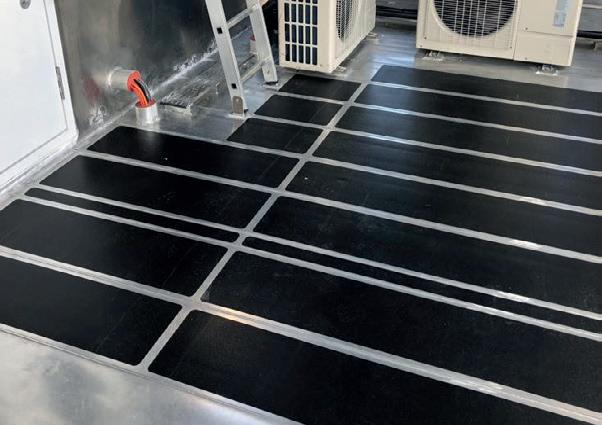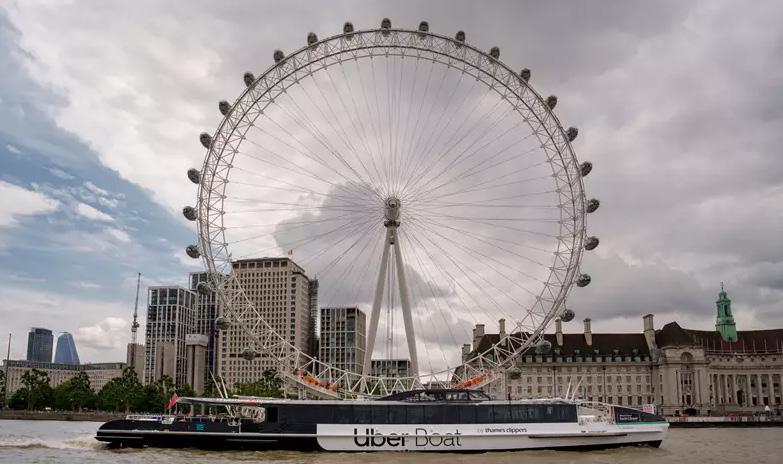






David Hill
The construction of lightweight, aluminium vessels capable of high speeds, with strong fuel efficiency is happening on the Isle of Wight as Wight Shipbuilding Company emerges as a global leader in its industry, revitalising UK industry while providing a significant contribution to the local economy. CEO Toby Mumford is proud of what is happening and tells Energy Focus that more growth and innovation is on the horizon.
//Due south of the UK mainland, six miles off the coast of southern England sits the Isle of Wight, an island steeped in history, heritage, and natural beauty. Covering just 147 square miles, the Isle of Wight is small but strategically positioned between the UK and the rest of Europe.
During WWII, the island was bombed aggressively but nevertheless
was a host for many important projects, including a pipeline to feed fuel to allied forces and the rest of Europe following D-day landings.
But over the decades, expertise has been lost from the island. Many industries have been consolidated on the mainland, and economic opportunities are now few and far between. The ocean economy
is an obvious choice for an island, but shipbuilding and energy have been eclipsed by tourism as the key driver of local markets.
At Wight Shipyard Company, the ambition is to change this situation and create significant economic opportunity, employment, and skills by becoming a centre of excellence for shipbuilding, refit, and repair. Located in the north of



the island, Wight Shipbuilding Company is already a respected world leader in construction of high-speed, aluminium vessels for various applications, but CEO Toby Mumford is keen on expanding quickly to take advantage of many modern opportunities.
“What separates us from the rest is our expertise in the hybrid and complex systems on smaller lightweight vessels,” he tells Energy Focus.
Combining knowledge of materials, innovative engine systems,
// WE SPECIALISE IN LIGHTWEIGHT ALUMINIUM VESSELS AND WE ARE A WORLD LEADER IN THE LIGHTEST, MOST FUEL EFFICIENT VESSELS //
and modern manufacturing methods, the company is pioneering a different way forward for ferries, crew transfer vessels, and other high-speed craft.
Established in 2010 as a company focused only on the complete revival and refit of the Shemara Motor Yacht, the business was rebranded in 2016 as Wight Shipyard Company (WSC). From there, growth was quick as the company picked up contracts for prominent ferry companies, manufacturing high-quality aluminium products that helped advertise the capability at HQ in East Cowes.
The past eight years have been buoyant for WSC. Major projects include ferries for Thames Link, Jacobite Cruises, and Red Funnel in the UK, and Ultramar in Mexico, Captain Morgan in Malta, and Twin City Liners in Vienna.
And the future pipeline is even more exciting, with WSC embracing new engine systems with a pioneering
hybrid design, and deeper entry in the offshore energy market.
“We are a builder of high-speed aluminium ferries, superyachts, and crew transfer boats. We specialise in lightweight aluminium vessels and we are a world leader in the lightest, most fuel efficient vessels,” Mumford confirms.
“In 2020, we delivered the world’s first hybrid surface effect crew transfer vehicle (CTV). We have just delivered the first three hybrid high speed vessels for the UK for Thames Clippers, and we are in build with some fully electric boats.”
The crew transfer vessels for CWind were used during construction of the Borssele 1 and 2 offshore windfarms in Dutch waters. WSC was selected because of its reputation for quality and ingenuity around modern systems. The hybrid option allows for a significant reduction in carbon emissions, using less fuel. The vessels are welcomed in the North Sea because of their ability
Continues on page 6




Continued from page 4
to ride waves of two meters and move to and from site at speed. The two catamaran hulls use novel centrifugal fan technology to blow air into the closed middle section, providing air cushion buoyancy. Two Scania 1600 kW diesel engines are supported by a 1500 kW battery pack and an integrated system that encourages low energy use while waiting in the harbour or manoeuvring around wind farms.
By 2030, there is expectations that 29 GW of offshore wind power should be installed in Europe to achieve climate targets. This market presents a major opportunity for a reliable, efficient, proven shipbuilder to supply CTVs and workboats across a large footprint. WSC entered the market in 2019 with a new brand – Vortisea – developed in collaboration with Incat Crowther.
Proof of the company’s green ambitions is its work on a fully electric
ferry for use in London. The idea is to connect communities on the south of the river to the city with ease, along a emission free route.
“We are busy with a 24-meter fully electric passenger vessel for the Thames and that will be the first of its class on the river. It will take 150 passengers and 100 bikes with the idea of linking up two cycle paths towards Canary Wharf, helping southeast London get into the city more efficiently. That will be in the water in 2025,” explains Mumford.
The ferry will run from Rotherhithe to Canary Wharf and will replace existing infrastructure which is coming to its end of life. It marks a continuation of a strong relationship with Uber Boat by Thames Clipper where WSC has been a reliable supplier for some years.
In 2022, fuelled by a merger deal with international shipbuilder OCEA, WSC entered a new growth phase,
seeking to expand aggressively and prove wrong those who said UK shipbuilding was a sinking industry.
“Our intention is to always expand,” insists Mumford. “OCEA has grown from nothing to 500 people in the past 30 years and we would like to follow to a similar size in the UK but in a shorter space of time. We have lots of plans to build boats in the UK and export worldwide.”
Currently home to around 160 people and a highly technical manufacturing facility, the company calls on a diverse skills base, demonstrated by Mumford who started life as a naval architect before working as a shipbroker and joining WSC in the commercial and sales team. When he took over as CEO, he quickly realised the opportunity to grow was substantial.
“We currently have 20 apprentices in place, but we want to grow that while improving the apprentice programme,” he says. “We are an island-based


company and employing people from the mainland is expensive. The Isle of Wight is an area of high unemployment, and we would like to continue to employ from the island, but to do that we need to build a skillset for the future. We think the best way to do that is through apprenticeships. Our head of refits has been here since inception and started his journey as an apprentice. He is now a highly skilled and highly valued member of the business.
“We like working with young people and growing their careers quickly. To deliver this programme, we work with the Isle of Wight College - Centre of excellence for composites, advanced manufacturing and marine (CECAMM).”
Focusing on light weight, aluminium vessels, built for higher speed and improved efficiency –especially those with hybrid or batter propulsion systems, WSC has to invest not only in the skills onsite in East Cowes but also in its supply chain to ensure the very best materials are
sourced and the company is at the top of the list when it comes to parts.
“We buy aluminium, we buy engines, we buy switchboards, we buy electric motors – both of which have long lead times,” says Mumford. “Trying to find suppliers of lightweight electric motors is tough. Batteries are also important and difficult to find. We have put a lot of work into discovering the best supplier of marine batteries,” he admits.
“Resilience of the business we are buying from is important. Price is relatively important, but weight and class approvals are essential. We work with both national and continental partners.”
Importantly, the basics of the business are in place. Short terms challenges in the supply chain and across macroeconomic policy are outweighed significantly by the opportunities and potential in the company and across the industry. For Mumford, this is just the start of a very exciting period for WSC.
He is keen for the company to by a catalyst for further development in the UK industry, revitalising local shipbuilding and marine operations.
“We are bringing efficient shipbuilding back to the UK,” he smiles. “When we started, everyone told us the skills had all been lost and it was impossible to build lightweight highspeed aluminium vessels in the UK and we should do it abroad. We have proven that we can do higher quality than anyone else in the world, for a price that is competitive, and we are exporting across the globe.
“WSC is building cutting edge technology vessels, in the UK, employing local people, paying fair wages, and building a sustainable model that can continue for years to come rather than being a traditional peak and trough shipyard,” he concludes.






